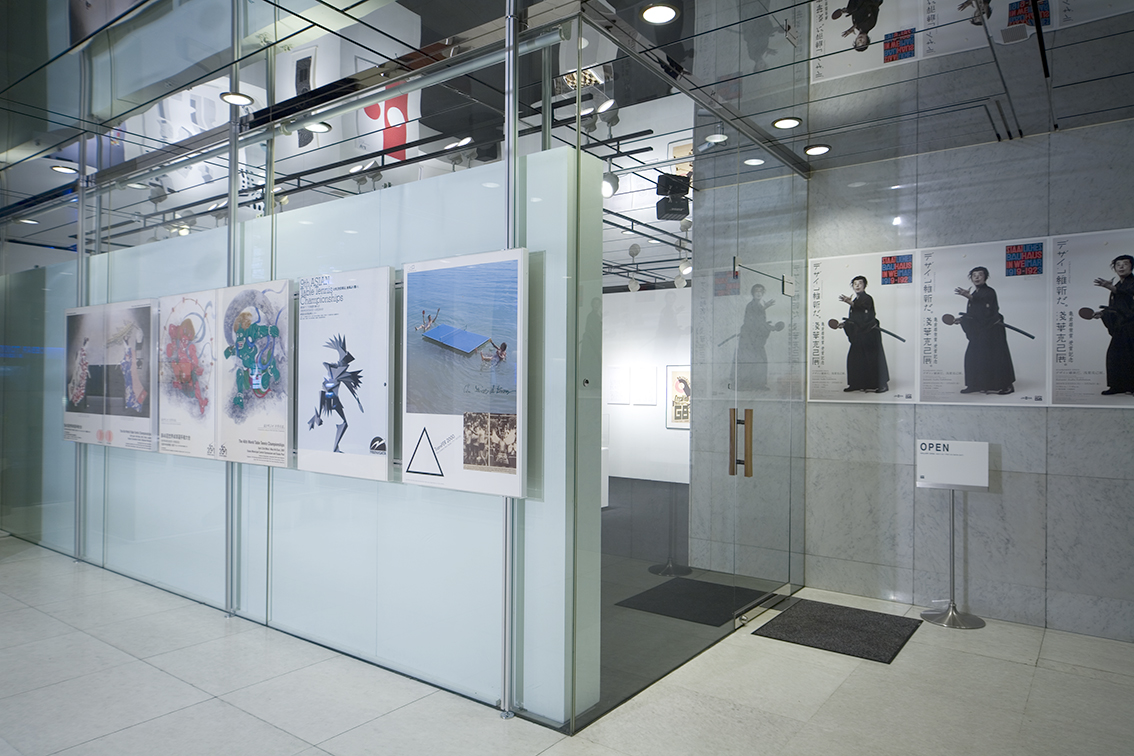
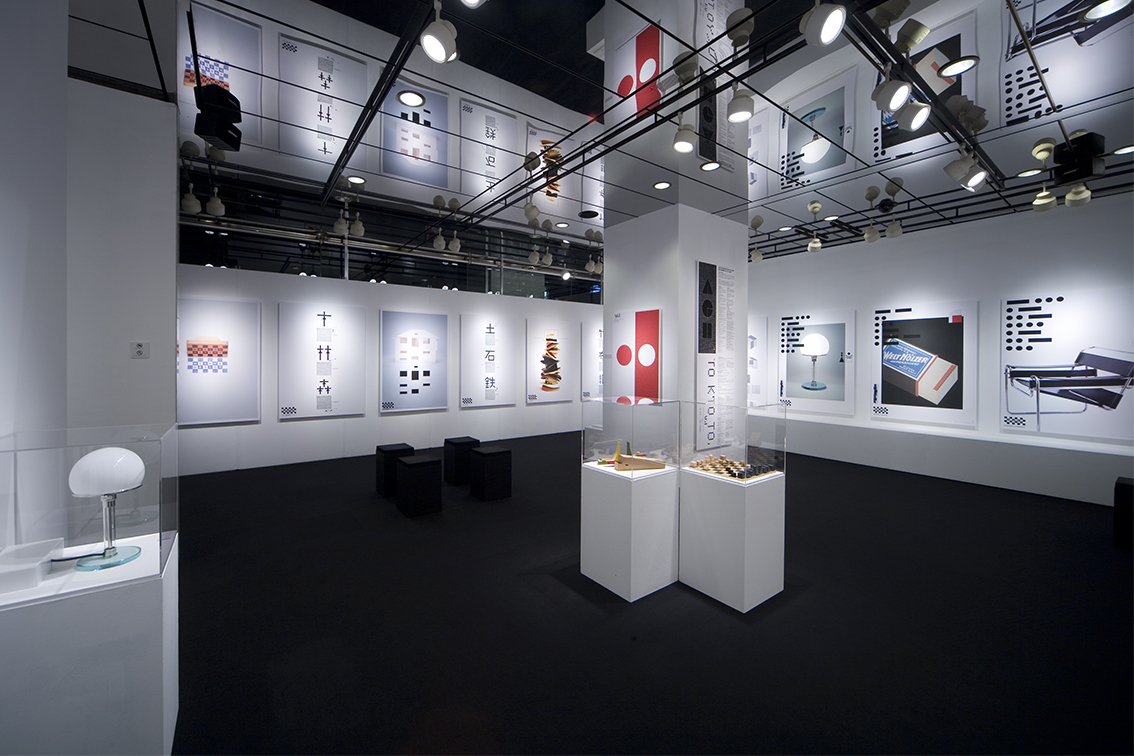
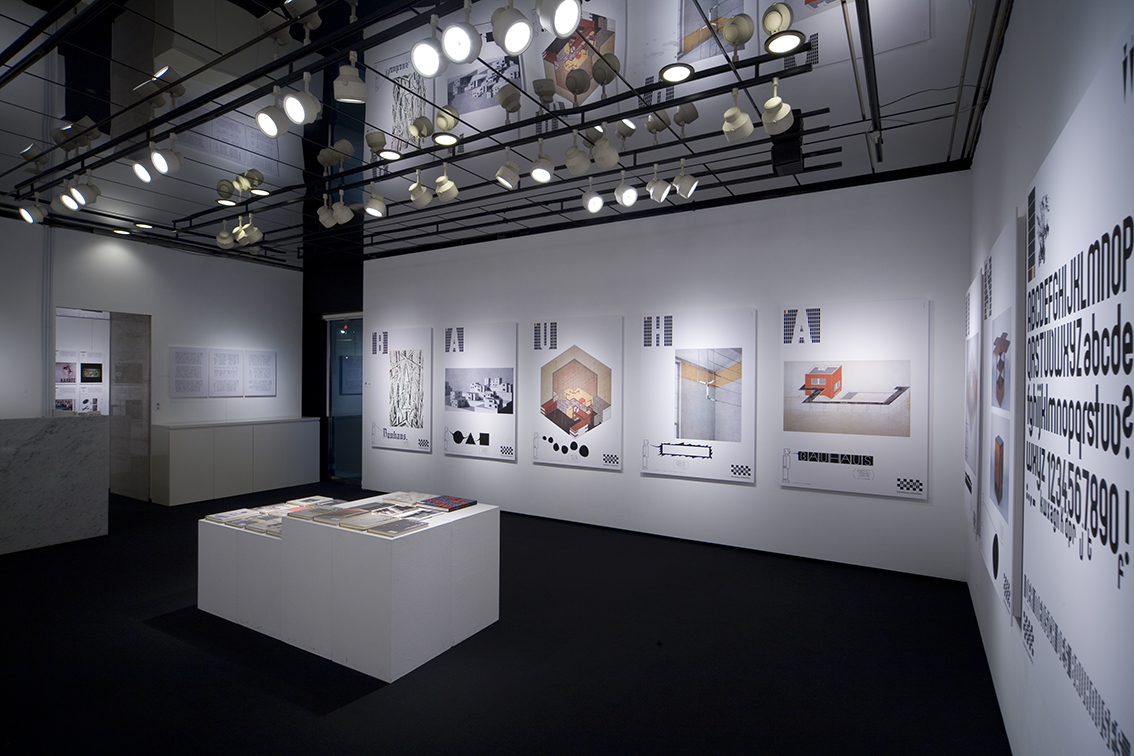
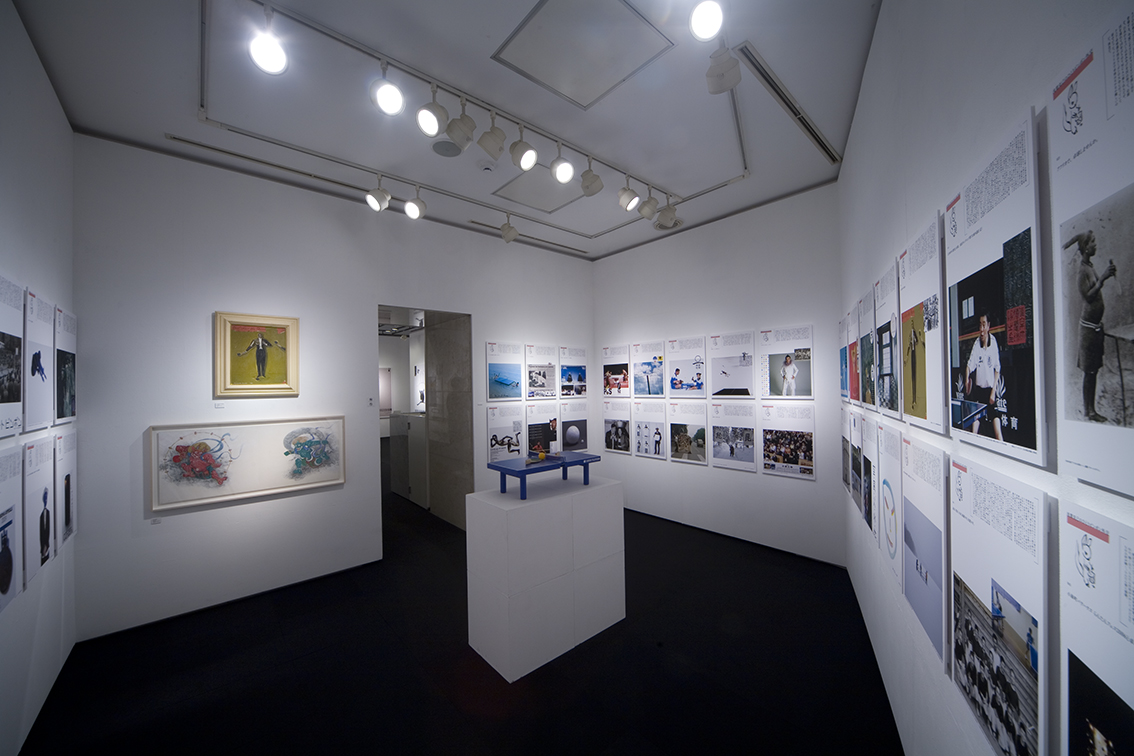
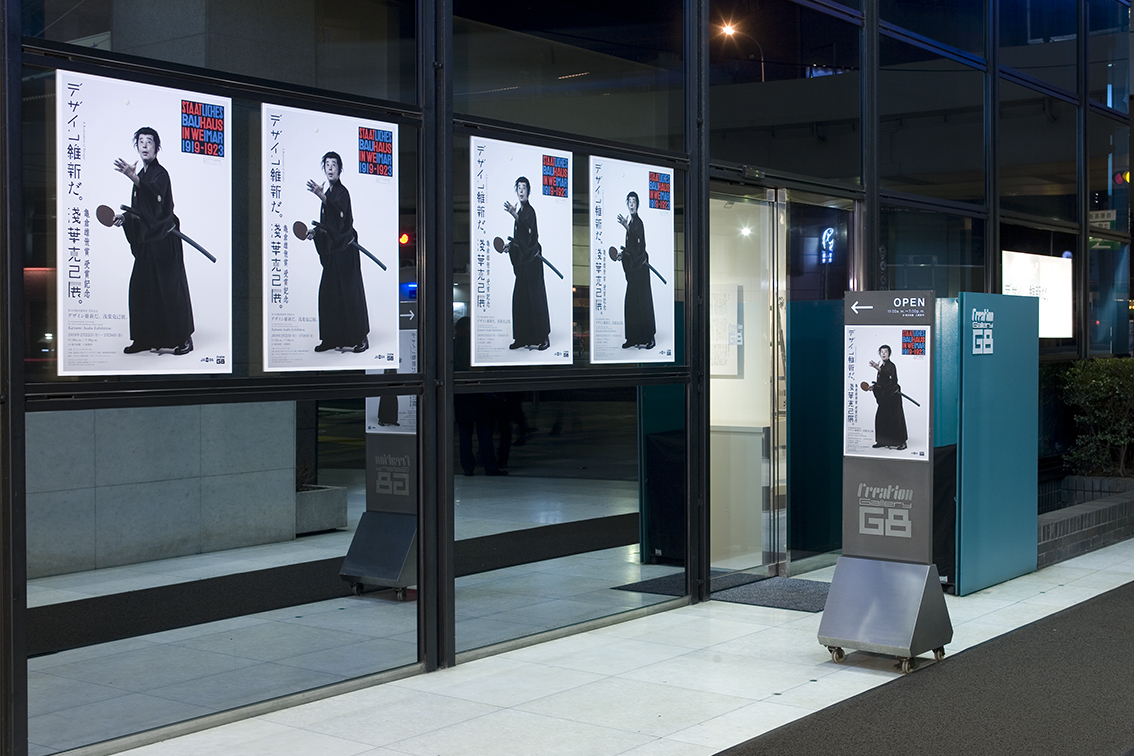

“Misawa Design 2009 Bauhaus”
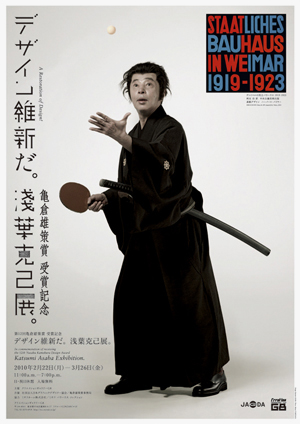
The 12th Yusaku Kamekura Design Award Winner
The Yusaku Kamekura Design Award was established in 1999 to honor the achievements of the late graphic designer Yusaku Kamekura (1915-1997), and to contribute to the further development of the graphic design field. Operation of the award program and selection of the winner, chosen annually, are performed by the Japan Graphic Designers Association Inc. (JAGDA). JAGDA awards the prize to the designer whose work or works are judged most worthy among all entries featured in its yearbook, Graphic Design in Japan.
The 12th Yusaku Kamekura Design Award was bestowed on Katsumi Asaba for his “Misawa Design 2009 Bauhaus” posters created to convey the design philosophy of a major Japanese home builder.
During his long career Katsumi Asaba has created numerous advertisements and commercial works, including his renowned “Delicious Life” for Seibu Department Stores, “Dream Road” for Suntory, and “Alinamin A” for Takeda Pharmaceutical. He is also highly knowledgeable in writing systems, most notably the Dongba pictographic script. In 2008 he served as director of the “Whispered Prayers” exhibition of works dealing with writing systems held at 21_21 DESIGN SIGHT. Mr. Asaba also received high acclaim for his spatial design and for his own work displayed at that show, “Asaba’s Diary.”
The Misawa Bauhaus Collection is an exhibition space opened by Misawa Homes in 1996 that currently has a permanent collection of some 1,500 works. Katsumi Asaba’s award-winning posters, which convey this home builder’s design philosophy, were created with this gallery’s cooperation. They were hailed for their thematic interest and expressive strength deemed worthy of the Yusaku Kamekura Design Award.
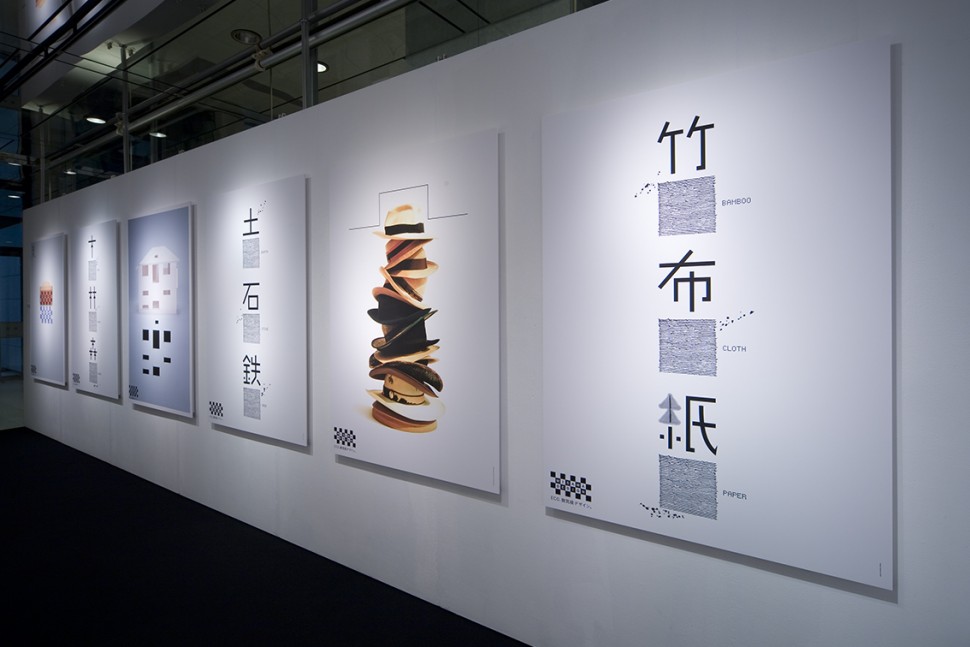
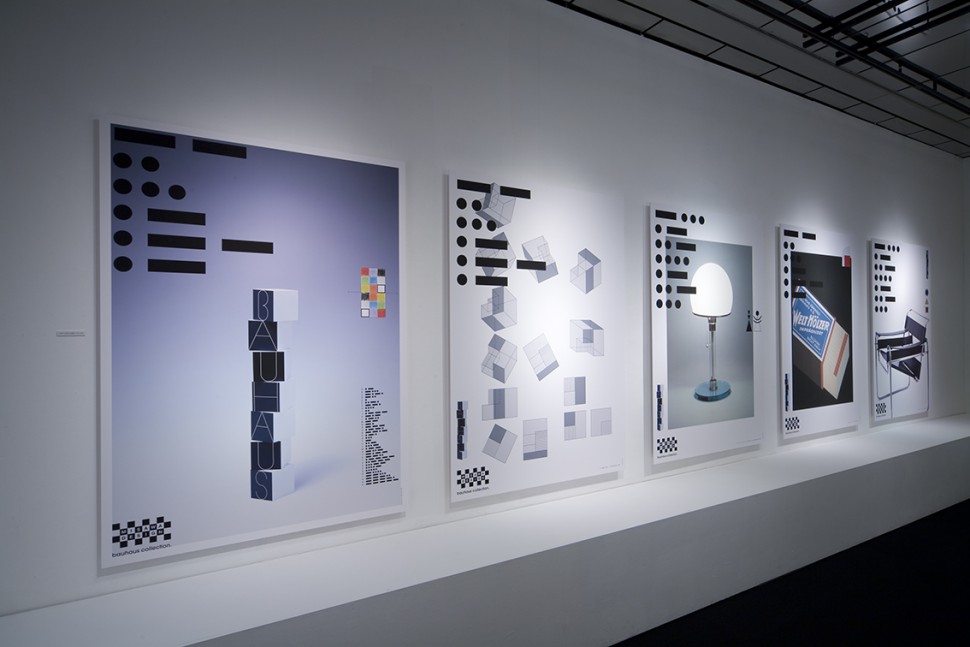
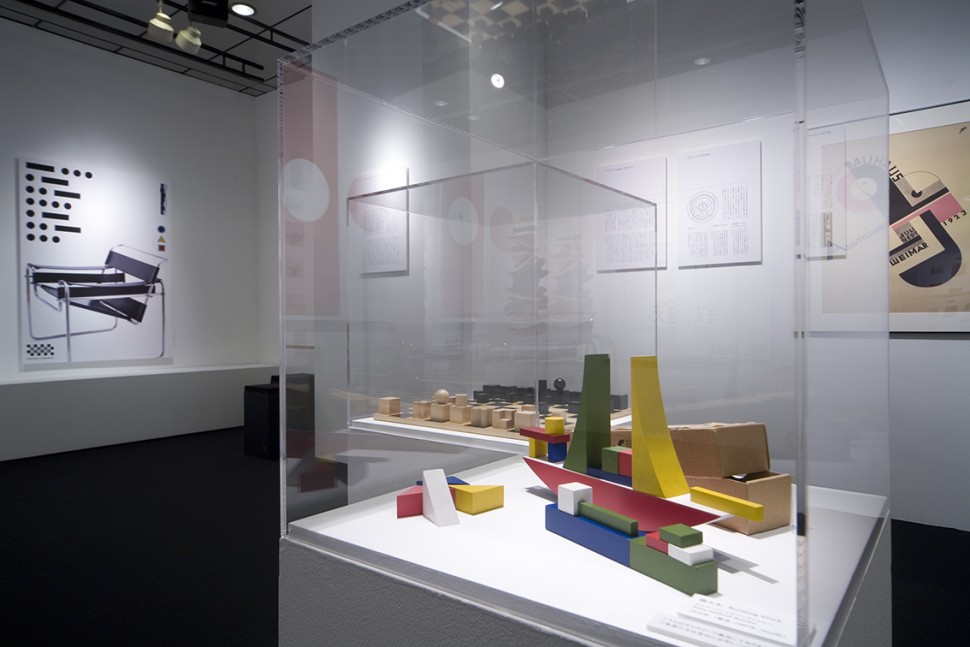
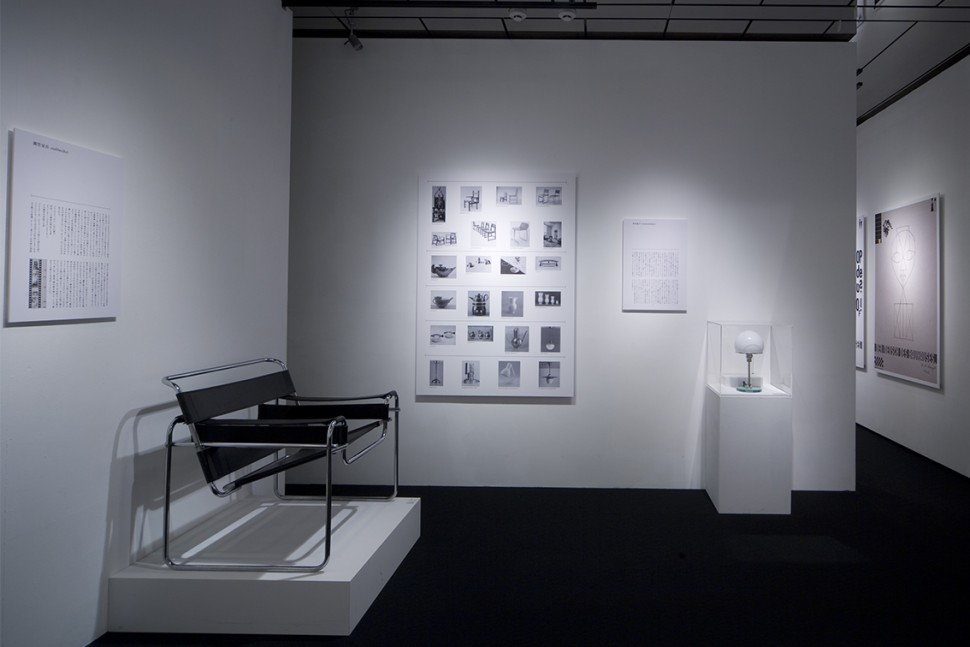
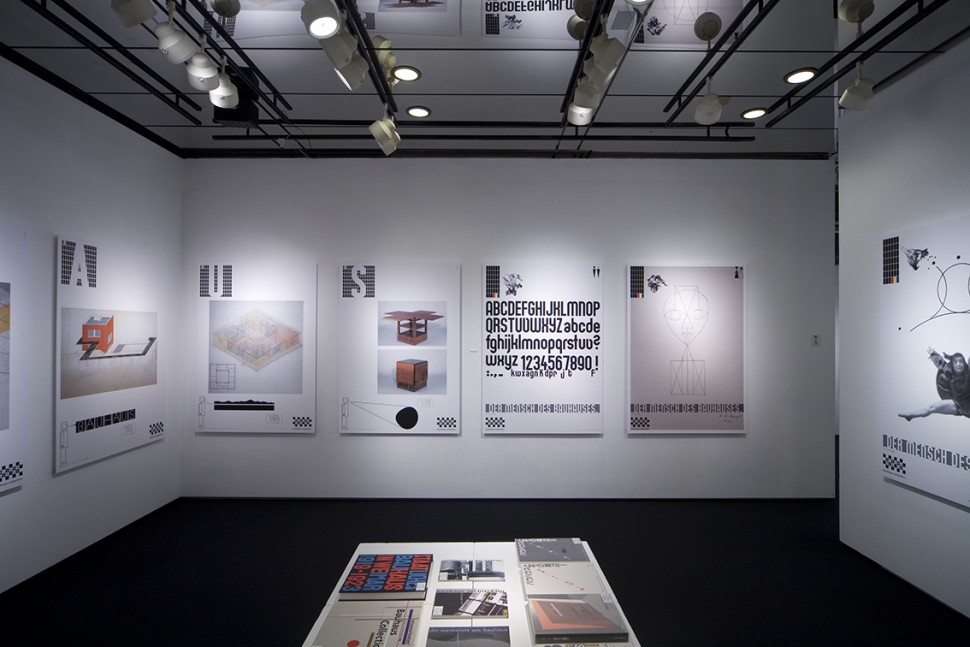
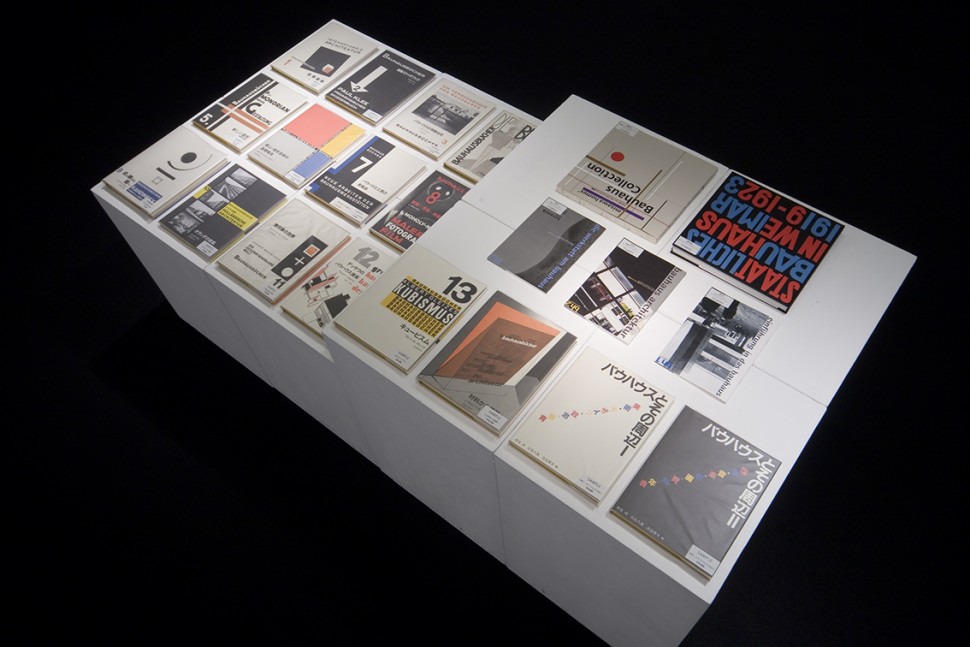
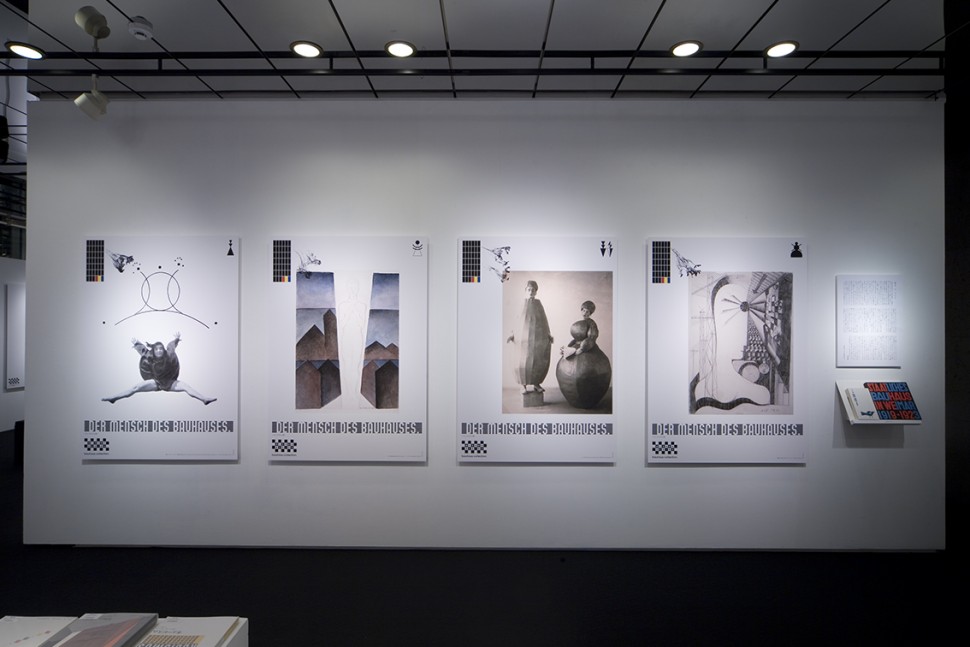
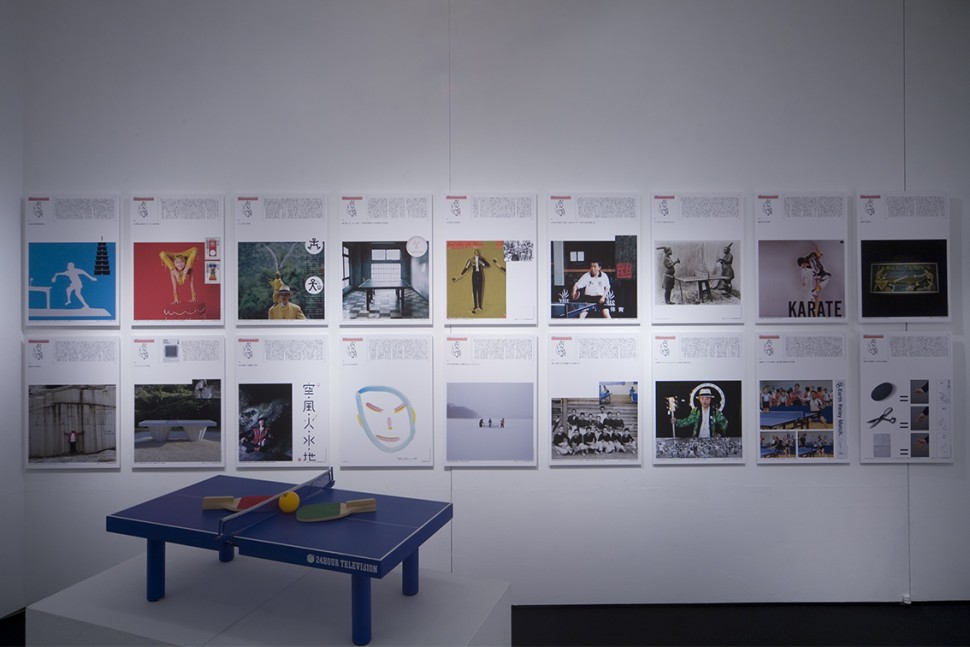
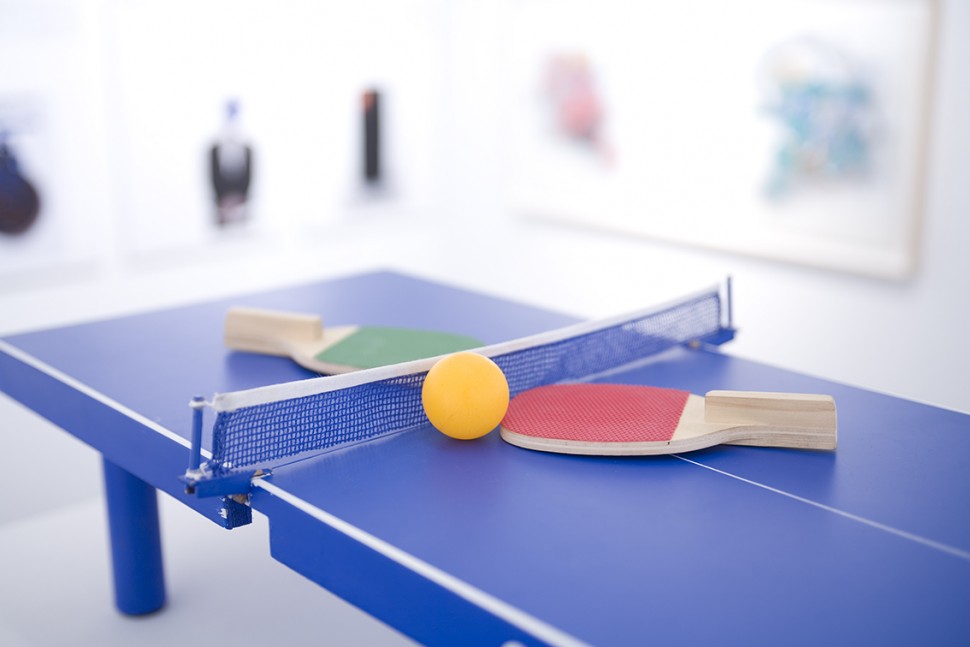
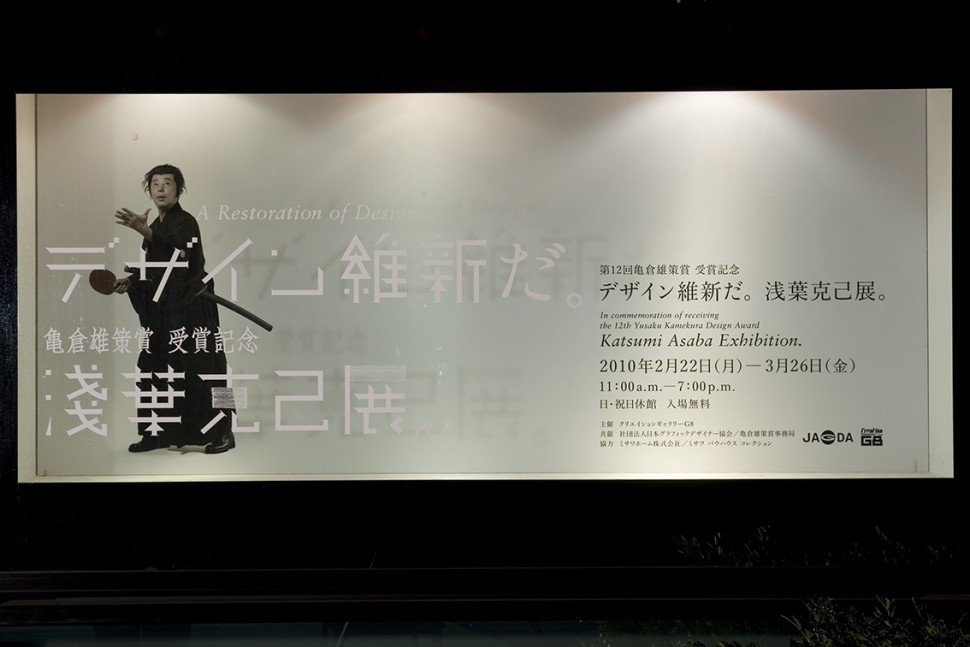
PREV
NEXT






“Misawa Design 2009 Bauhaus”
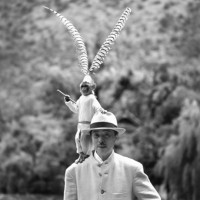
Katsumi Asaba was born in 1940. After working for Light Publicity, in 1975 he established the Katsumi Asaba Design Studio. Through the years he has created numerous advertisements for clients including Suntory, Seibu Department Stores, Takeda Pharmaceutical, Kirin Beverage and Misawa Homes. He currently is a committee member of the Tokyo Art Directors Club (ADC), chairman of the Tokyo Type Directors Club, president of the Japan Graphic Designers Association (JAGDA), chairman of the Design Association, (10th) president of Kuwasawa Design School, and Japan representative in Alliance Graphique Internationale (AGI). He holds a 6th rank (dan) of proficiency in table tennis. Mr. Asaba received a Japan Academy Award for Best Art for his art direction of the film “Sharaku,” and a Medal with Purple Ribbon from the Japanese Government. In 2008 he directed the exhibition “Whispered Prayers” at 21_21 DESIGN SIGHT. For his “Asaba’s Diary” displayed at that show, Mr. Asaba received his second Tokyo ADC Grand Prize.
Exhibition Overview
The exhibits will center on Mr. Asaba’s posters created for Misawa Homes’ Bauhaus Collection, including his prize-winning works of 2009. Also on display will be remade versions of works he originally serialized in the magazine “World Table Tennis” and his graphics created for the AGI Design Congress held in Japan in 2006.
Yusaku Kamekura Design Award
The Yusaku Kamekura Design Award was established to honor the design achievements of the late Yusaku Kamekura (1915-1997), as a way of contributing to the ongoing development of the graphic design field. Made possible through a gift from the Kamekura family, the award program is operated by the Japan Graphic Designers Association Inc. (JAGDA), where Mr. Kamekura long served in the role of its founding president. Under this program, the “Yusaku Kamekura Design Award” is presented to a Japanese graphic designer once annually and the “Yusaku Kamekura International Design Award” to an internationally active non-Japanese designer once every three years. The former award is bestowed upon the creator of the work or works deemed most outstanding among all entries for inclusion in the JAGDA yearbook, Graphic Design in Japan; the latter is awarded to what is judged to be the best work, especially in terms of universal global appeal, among entries for the International Poster Triennial in Toyama held at the Museum of Modern Art, Toyama.
Mr. Kamekura garnered wide acclaim for his design of the posters used to promote the 1964 Tokyo Olympics. Never satisfied to rest on those laurels, however, he subsequently continued to create graphic works always at the forefront of artistic invention, often vying against designers far his junior. He also devoted his energies to pursuing the quintessential artistry of graphic design as founder and editor of “CREATION” magazine; and it is this commitment to graphic design – both its universal appeal and innovative vigor – that the awards established in Mr. Kamekura’s name aim to carry on. Each award comes with a prize of JPY 500,000 and a plaque designed by Taku Satoh.
Previous Award Winners
Ikko Tanaka (1999), Kazumasa Nagai (2000), Kenya Hara (2001), Kashiwa Sato (2002), Masayoshi Nakajo (2003), Kazunari Hattori (2004), Mitsuo Katsui (2005), Shin Matsunaga (2007), Taku Satoh (2008), Ryosuke Uehara (2009), Katsumi Asaba (2010). (No works were judged worthy of the award in 2006.)
Message from the Award Winner
I wish to express my appreciation and deep gratitude for receiving the Yusaku Kamekura Design Award. For the first time in a long while, I reread “Takeoff and Landing,” a thick book in which Mr. Kamekura wrote his thoughts on design. I received the book from him 37 years ago, and I noted how his autograph, written at the time by fountain pen, had faded. I recalled how I had heard a rumor that he was angry at me for not sending him a thank-you note, so I had dashed one off in haste. The conversation between Mr. Kamekura and Kiyoshi Awazu at the front of the book contained important statements regarding typography. In the chapter titled “One Book: The Bauhaus and Me,” Mr. Kamekura wrote that he intensely felt his fate had been sealed when, at the age of 19, he had found “STAATLICHES BAUHAUS IN WEIMAR 1919-1923,” known for its cover by Herbert Bayer, in a used bookshop in Kanda. The book was likely very important to him, because it was always kept inside a glass case and I was never able to see what it contained. Fortunately, a Japanese translation of the original was completed by Isao Toshimitsu, former president of Oita Prefectural College of Arts and Culture, and published on August 20, 2009, the year marking the 90th anniversary of the founding of the Bauhaus. Mr. Toshimitsu wrote that as a translator there could be no greater joy than if his work inspired a reexamination of the Bauhaus, a shining remnant of 20th century artistic and educational culture. Every day, we art directors and graphic designers have to ask ourselves, “Where are we going? And what are we going to do?” We have to take something completely formless and give it form, to send a message to people. Misawa Homes, which had earlier held study sessions centered on Kiyoshi Awazu, started its “Misawa Bauhaus Collection” in 1989, its core consisting of works gleaned by collectors in Europe. Today the collection contains some 1,500 items. The Bauhaus existed for only 14 years, from 1919 to 1933, yet no design education has spread worldwide to its extent. Japan alone has the ability to give form to both what is Eastern and what is Western. With such sentiments in mind, for three years now I have continued to create Bauhaus posters.